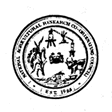
 |
|
| Home | About NARCC | Constituent Institutions | R & D Programs | Major Developments | Training | Contact Us | |
|
Major Developments at NARCC
Development and Dissemination of Improved Technologies Promoting NERICAS: Three varieties of NERICA (NERICA 1, 2 & 3) were released in 2003. They have a short duration ranging from 90 – 100 days (compared to 120 – 150 days) of typical upland varieties, and potential yield of about 2 – 2.5 t/ha. Upland rice typically often yields less than 1 t/ha. In addition to the short duration NERICAS compete well with weeds (a bane of upland farming), are resistant to major pests and diseases and tolerant to drought and soil acidity. They have good protein content and palatability. Demonstrations were conducted in 2004 in uplands, I.V.S, and Boli land ecologies for farmers to observe the performance of new varieties (including NERICA) relative to existing local and improved varieties. In the uplands, farmers were particularly impressed by the short duration of NERICA as a means of combating the ‘hungry season’. Indications were that adoption of NERICAS as hungry season rice and for double cropping will lead to improvement of the food security situation. NERICAS and other improved rice varieties developed by RRS are indeed being adopted by farmers. A WARDA/RRS survey conducted in 60 villages in 23 chiefdoms in 2004/2005 revealed an average adoption rate of 48% and a range of 35% in the Western Area to 62% in the Southern province. Popular improved varieties include ROK3 and ROK16. Control of iron toxicity: Iron toxicity is a major problem in lowland rice cultivation, and results in yield losses of up to 80%. In severe cases the entire crop can be lost. Farmers lack the technology to combat the problem. Use of tolerant varieties and application of rice husk was successfully demonstrated to farmers in 2004 in IVS and Bolis at Makeni. Application of rice husk resulted in 48% and 28% yield increases. Cash crop development: Food security is “food on the table as well as money in the pocket”. Farmers purchasing power (for inputs and consumer durables) will be increased if they have good cash crops. Sorghum a traditional food crop especially in the drier parts of Sierra Leone is becoming one such crop. As part of a sub regional project, the Common Fund for Commodity (CFC) has since 2005 been sponsoring a preliminary phase of a project to enhance the sorghum supply chain in Sierra Leone, under public – private – partnership implementation. The European Cooperative for Rural Development EUCORD, in association with an NGO Community Biodiversity Action Network (CBAN) and RRS are the implementing partners in Sierra Leone. The initial phase involving variety, fertilizers and crop protection trials has been successfully completed. The project will enable farmers to meet market specifications. Since the Sierra Leone Brewery is committed to purchase locally produced sorghum for the manufacture of Maltina and Star beer, farmers would be assured of a good and steady market outlet. New releases: a total of 5 improved cassava varieties (SLICASS 1, 2, 3, 4, 5) and 4 improved sweet potato varieties (SLIPOT 1, 2, 3, 4) were released by IAR in 2002, while three cowpea varieties (SLIPEA 1, 2) and 1 groundnut variety (SLINUT 1) were released in 2004. These varieties have significant yield advantages over local varieties and resistance to pests and diseases. They possess desirable consumer qualities for both consumption and processing. Widespread adoption of these varieties by farmers will more than double crop production without any increase in land area brought under cultivation. Doubling of crop production would ensure that MAFF’S projected targets for 2007 are met.
|